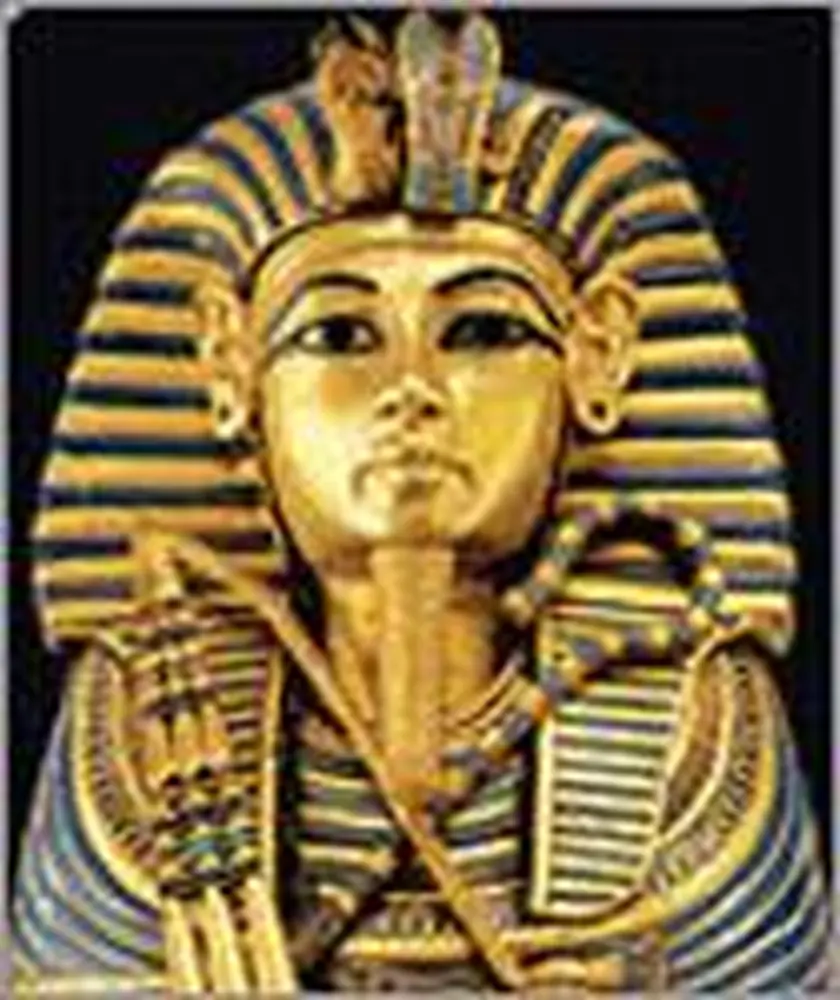

They are calling him "the King of Bling" because of his lavish array of gold and jewels. And as he begins his second tour of the United States, he's getting the rock-star treatment. But unlike most aging rock stars, he just happens to be over 3,000 years old.
His name: King Tut.
Tutankhamun, the boy king of Egypt, last swept through the United States in 1976-77 in one of the country's first blockbuster museum exhibits. Now, the King Tut exhibit is back, traveling to several cities in 2006, including Chicago. The boy king's appeal doesn't appear to be diminishing with the years.
"Tut certainly was not a prominent pharaoh," says University of Illinois anthropologist Douglas Brewer, who specializes in Egypt's Predynastic to Old Kingdom Periods. (King Tut was from the New Kingdom, nearly five centuries later.) But the boy king became a modern global phenomenon, he says, "because of the circumstances in which his tomb was found and the press at the time. The discovery stimulated a Renaissance in Egyptian art and jewelry in this country and in Europe.
"What also made the King Tut discovery so unique was that it was the first example of a royal tomb intact," adds Brewer, director of the U. of I.'s Spurlock Museum.
Archeologist Howard Carter described the 1922 discovery this way:
"At first I could see nothing, the hot air escaping from the chamber causing the candle flame to flicker; but presently, as my eyes grew accustomed to the light, details of the room within emerged slowly from the mist, strange animals, statues, and gold-everywhere the glint of gold."
In addition to the scope of the find, Brewer says that worldwide interest was fueled by the mysterious "curse of the pharaoh" that supposedly killed people connected to the dig.
The expedition leader, Carter, lived to a healthy old age; but Lord Carnarvon, who financed the dig, died about six months after the discovery. He cut a mosquito bite while shaving and it became infected, leading to blood poisoning. According to stories, Lord Carnarvon's dog back in England gave out a howl and died at roughly the same time he did.
However, Brewer adds, if you consider all of the people who worked on the dig, the pattern of deaths was quite normal.
Tut was crowned at about age 10 and reigned until his death roughly nine years later-which explains his "boy king" moniker. But exactly how he died remains a mystery, Brewer says.
"For a long time," he explains, "researchers thought he died from a blow to the head. From the x-rays, you could see there was damage to the skull. But after more recent work, they now believe the skull fracture was post-mortem. It may have happened during the mummification process."
Nevertheless, Brewer says, foul play has been suspected because of the circumstances following Tut's death. In a very unusual turn of events, a general succeeded him as pharaoh.
Brewer has seen the burial chamber of Tut and says it is fairly small. But there's more to the tomb than the burial chamber. It's actually a series of rooms, moving steadily downward toward the underworld.
After an elaborate funeral, Brewer says, Tut would have been sealed into the burial chamber. Then a person wearing the head of a jackal god would have erased all footprints and other evidence of this world.
The irony is that fascination with Egyptian culture has brought many more footprints back to the tomb-and to the museum exhibits.
According to Brewer, the mystery and the myth of Egyptian culture are what draw people back. "I tell my students that when Cleopatra and Caesar looked at the pyramids, the time from the pyramids to them was much longer than the time from Caesar to us. That's how ancient that culture is."


